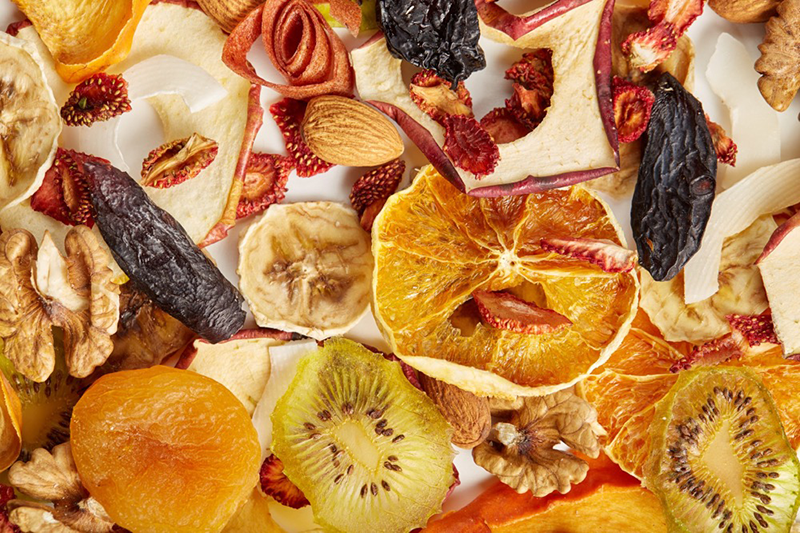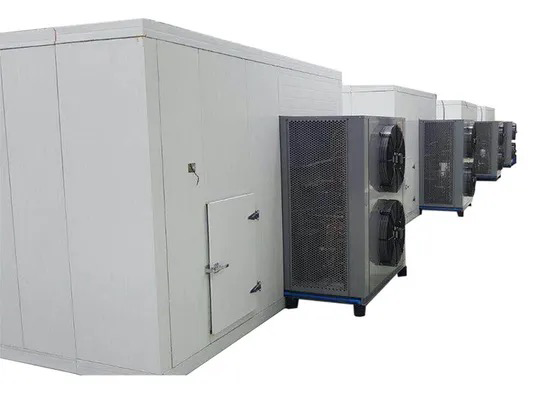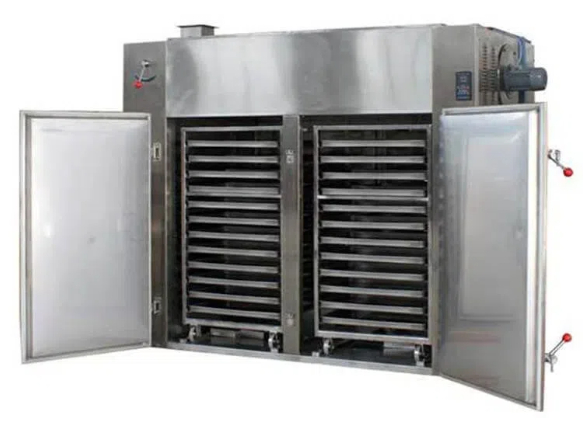
Content Menu
● Understanding Heat Pump Dryers
● Key Features to Consider
● Benefits of Using Heat Pump Dryers
● Types of Heat Pump Dryers
● Maintenance Tips for Heat Pump Dryers
● Choosing the Right Model
● Cost Considerations
● Conclusion
● FAQ
>> 1. What is the difference between a heat pump dryer and a conventional dryer?
>> 2. Can I dry different types of food in a heat pump dryer?
>> 3. How long does it take to dry food in a heat pump dryer?
>> 4. Is it noisy when operating?
>> 5. How do I maintain my heat pump dryer?
● Citations:
When considering the purchase of a heat pump dryer, particularly for food drying applications, it's essential to understand the various features that can enhance your drying experience. As a manufacturer of food drying machines, we aim to provide insights into what makes an excellent heat pump dryer for both commercial and home use. This guide will cover key features, benefits, and considerations to help you make an informed decision.

Understanding Heat Pump Dryers
Heat pump dryers are an innovative solution for drying food products efficiently. They utilize a heat pump system to extract moisture from food while maintaining low energy consumption. Unlike traditional dryers, heat pump dryers recycle heat, making them environmentally friendly and cost-effective.
The technology behind heat pump dryers involves the use of refrigerants that absorb moisture from the air inside the dryer. This moisture-laden air is then passed over a condenser where it is cooled, causing the moisture to condense and be collected. The dry air is reheated and circulated back into the drying chamber, allowing for continuous moisture removal. This closed-loop system not only conserves energy but also ensures a consistent drying environment.
Key Features to Consider
When selecting the best heat pump dryer for your needs, consider the following features:
- Energy Efficiency: Look for models with high energy efficiency ratings. Heat pump dryers typically consume less energy than conventional dryers due to their ability to recycle heat. Energy Star-rated models are often a reliable choice.
- Temperature Control: Adjustable temperature settings are crucial for drying different types of food. Various foods require specific temperatures to ensure optimal drying without compromising quality. For instance, delicate fruits may need lower temperatures compared to tougher vegetables or meats.
- Humidity Control: Some advanced models come with humidity sensors that adjust the drying process based on the moisture content of the food, ensuring consistent results. This feature can prevent over-drying or under-drying, which can affect taste and texture.
- Capacity: Choose a dryer that fits your production needs. Larger capacities allow for bulk drying, which is beneficial for commercial operations. Consider how much food you typically need to dry at once and select a model that accommodates that volume.
- Noise Level: If noise is a concern, look for models designed to operate quietly. This feature is particularly important in residential settings or small businesses where noise can be disruptive.
- Ease of Use: User-friendly controls and digital displays can simplify operation and monitoring during the drying process. Features like programmable settings allow users to set specific drying times and temperatures based on their needs.
- Durability: Consider the materials used in construction. Stainless steel models tend to be more durable and easier to clean than plastic ones. A robust build ensures longevity, especially in commercial settings where the machine will see frequent use.
- Safety Features: Look for dryers equipped with safety features such as overheat protection, automatic shut-off mechanisms, and child locks. These features provide peace of mind during operation.
Benefits of Using Heat Pump Dryers
Heat pump dryers offer several advantages over traditional drying methods:
- Cost Savings: Their energy-efficient design leads to lower utility bills over time. While the initial investment may be higher than conventional dryers, the long-term savings on energy costs can be significant.
- Quality Preservation: Heat pump dryers maintain the nutritional value and flavor of dried foods better than other methods due to their gentle drying process. This is especially important for health-conscious consumers looking to preserve vitamins and minerals in their food.
- Versatility: These dryers can handle various food types, including fruits, vegetables, meats, and herbs. The ability to dry multiple types of food makes them ideal for home cooks and commercial kitchens alike.
- Environmentally Friendly: By using less energy and recycling heat, these dryers have a lower carbon footprint compared to conventional dryers. This eco-friendly aspect appeals to consumers who prioritize sustainability in their purchasing decisions.
Types of Heat Pump Dryers
There are two primary types of heat pump dryers:
1. Stackable Models: These feature multiple trays stacked vertically. They are space-efficient but may require periodic tray rotation for even drying. Stackable models are often favored in home settings where space is limited.
2. Cabinet Models: These have horizontal airflow and allow for larger batches without crowding trays. They typically provide more consistent results across all trays due to better airflow distribution. Cabinet models are ideal for commercial applications where larger quantities need processing at once.

Maintenance Tips for Heat Pump Dryers
To ensure longevity and optimal performance of your heat pump dryer:
- Regularly clean filters and trays to prevent buildup that can affect airflow and efficiency. A clean filter allows for better air circulation and more efficient drying.
- Check seals and gaskets periodically to ensure they are intact and functioning properly. Damaged seals can lead to air leaks, reducing efficiency.
- Follow manufacturer guidelines for maintenance schedules and recommended cleaning products. Adhering to these guidelines will help maintain warranty coverage as well as performance standards.
Choosing the Right Model
When choosing a heat pump dryer, consider your specific needs:
- For Home Use: If you're a home cook looking to preserve seasonal fruits or vegetables, a smaller stackable model may be sufficient. Look for features like easy temperature control and compact design.
- For Commercial Use: Businesses requiring larger capacities should invest in cabinet models with advanced humidity control features. Additionally, consider models with programmable settings that allow you to automate the drying process based on different product requirements.
Cost Considerations
The price range for heat pump dryers varies significantly based on capacity, features, and brand reputation:
- Entry-Level Models: Typically range from $500 to $1,000; suitable for home users or small-scale operations with basic features.
- Mid-Range Models: Priced between $1,000 and $2,500; these often include better energy efficiency ratings and additional features like humidity control sensors.
- High-End Models: Can exceed $2,500; designed for commercial use with large capacities and advanced technology integration such as Wi-Fi connectivity for remote monitoring.
Investing in a higher-quality model may yield better long-term results in terms of durability and efficiency.
Conclusion
Investing in a quality heat pump dryer can significantly enhance your food preservation efforts while saving energy and maintaining product quality. By considering the features outlined above—energy efficiency, temperature control, humidity sensors, capacity options—you can choose a model that meets your specific needs—whether you're a home cook or a commercial producer.
As you navigate through various brands and specifications available in the market today, remember that choosing the right heat pump dryer not only impacts your immediate drying needs but also contributes positively towards sustainability goals through reduced energy consumption.

FAQ
1. What is the difference between a heat pump dryer and a conventional dryer?
Heat pump dryers recycle heat for moisture removal, making them more energy-efficient than conventional dryers that expel hot air.
2. Can I dry different types of food in a heat pump dryer?
Yes, most heat pump dryers are versatile enough to handle various foods like fruits, vegetables, meats, and herbs with adjustable temperature settings.
3. How long does it take to dry food in a heat pump dryer?
Drying times vary based on the type of food and its moisture content but generally range from several hours up to a full day depending on conditions set by the user.
4. Is it noisy when operating?
Many modern heat pump dryers are designed to operate quietly; however, noise levels can vary by model depending on motor design and insulation used during manufacturing processes.
5. How do I maintain my heat pump dryer?
Regular cleaning of filters and trays along with checking seals will help keep your dryer in good condition; following maintenance guidelines provided by manufacturers is also crucial for optimal performance longevity.
Citations:
[1] https://www.lowes.com/n/buying-guide/best-food-dehydrator-buying-guide
[2] https://www.seriouseats.com/best-food-dehydrators-5216308
[3] https://create.vista.com/photos/dehydrator/
[4] https://www.youtube.com/watch?v=mtDzdYoyeR8
[5] https://www.choice.com.au/home-and-living/kitchen/benchtop-cooking/buying-guides/food-dehydrators
[6] https://thruhikers.co/dehydrators/
[7] https://www.youtube.com/watch?v=rR2G5UO-5Ms
[8] https://pleasanthillgrain.com/resources/dehydrators-buying-guide
[9] https://www.thespruceeats.com/best-food-dehydrators-4077285
[10] https://www.youtube.com/watch?v=Zl4wTcCPJu0











